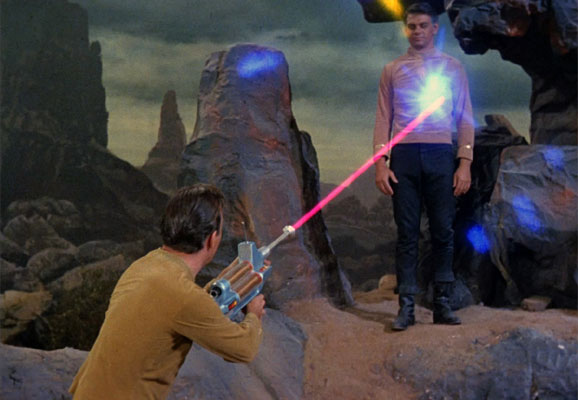Phasers Have Been Invented And Lasers Can’t Do Anything About It
Klingons beware.
This article is more than 2 years old
Set your phasers to “Celebrate,” because now the phaser you are setting actually exists, only it isn’t fully functional and doesn’t have any actual settings. So maybe just celebrate of your own accord.

Lasers were developed over fifty years ago, and have used light in everything from optical surgeries to making audiences look at that one guy’s crotch on stage. While a light-free counterpart to the laser has for years existed in theories (and in Star Trek episodes), engineer Imran Mahboob has moved it from the mental to the physical world, developing a process that focuses phonons – the acoustic-friendly vibrations of excited quantum particles – without the need for photons of visible light in order to make “pew” noises. Mahboob and his team at the NTT Basic Research Laboratories in Japan, whose study appears in Physical Review Letters, advanced upon the hybrid models of sound lasers that used light to created the sound emission. However, without light’s ability to travel through a vacuum, phonons need something to travel through, so actually shooting them out would render them useless for their purpose. But it’s still the first step down a brand new path of research.
While lasers use a narrow wavelength of light and mirrors to produce their beams, in much the same wa Trek’s phasers fire particles Mahboob’s team used a mechanical oscillator to excite the phonons, which then relaxed and released their energy back out, causing their phaser to vibrate at wavelengths around 170 kilohertz, way higher than the 20 kilohertz that caps off the human hearing scale. And it’s all etched onto a 1 cm x 0.5 cm integrated circuit. So it’s basically a mad scientist’s eardrum, to be used to take over the world!
Realistically, the still-young process could potentially aid in the medical field, particularly in simpler forms of ultrasounds. As well, it could be used for high-precision measurement, both in the fields of engineering and architecture as well being a possible replacement for the quartz crystal that most watches run on.












